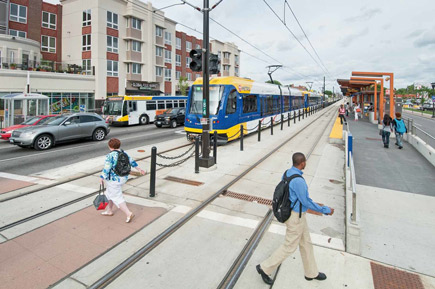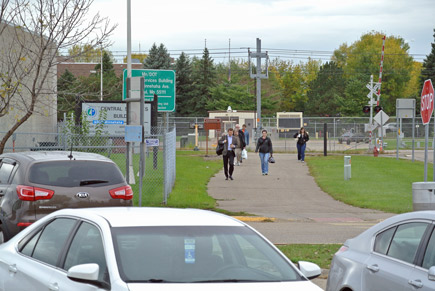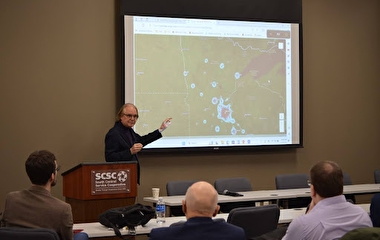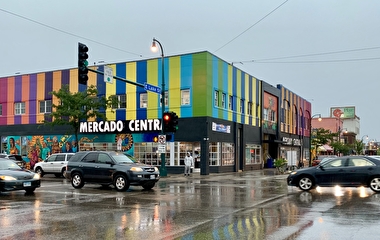To park or to develop is a key question for transit station area planning. While park-and-ride facilities are one of the primary ways that transit riders reach stations, using the surrounding land for development allows passengers to shop or do other activities and can help reduce auto dependence. Although both have the potential to improve ridership, they often seem mutually exclusive. Twin Cities planners are interested in a hybrid option: locating park-and-ride facilities at the periphery of development around transitway stations.
This hybrid would require transit users to walk farther. In a new study, researchers at the Humphrey School of Public Affairs led by Professor Jason Cao studied how far park-and-ride users are willing to walk, which factors influence that willingness, and which factors are the most important to park-and-ride users’ decision to walk.
“Very little research has been conducted on how far park-and-ride lots can be located away from transitways while maximizing ridership and revenue—the ‘tolerance distance’ for park-and-ride users,” Cao explains. “In fact, no previous studies have explored how walking tolerance varies by the design of walking paths between park-and-ride lots and transit stations.”
Data for this study were collected using web-based surveys of park-and-ride users from lots serving a variety of transit modes and locations throughout the Twin Cities region. Respondents were asked how far they walked to a station; for the analysis, the minimum was set at two blocks and the maximum at five. Sections gathered information about respondents’ last park-and-ride trip, attitudes with respect to their daily travel habits, their behaviors if there were no park-and-ride stations, and preferred pedestrian environment.
The pedestrian environment portion of the survey further explored trade-offs among walking distance, intersection safety, pedestrian infrastructure, and building appearance. Respondents were asked to imagine walking through a shopping area from a park-and-ride lot in order to reach their bus stop or train station and presented with four scenarios. In each scenario, respondents were asked to consider three images and choose the one they would feel most comfortable walking through to reach their transit station or stop.
The surveys found that the average walking distance for all respondents was three city blocks. “Nearly 39 percent chose to walk two blocks, while at the other extreme, only 11 percent chose to walk five blocks,” Cao says.
The results also indicate that walking distance is much more important than intersection safety, pedestrian infrastructure, or building appearance in affecting park-and-riders’ choice. “However, if all three of these characteristics are adequate, it seems to offset distance, and park-and-ride users are willing to walk 1.8 blocks farther than they currently do,” he says.
Deeper analysis of the pedestrian trade-offs found that when determining how far they are willing to walk, park-and-riders value snow clearance, street lighting, and intersection safety. “In general, the quality of the sidewalk network connecting transit stops and park-and-ride facilities is the most important, followed by safety and security attributes associated with the walking environment,” Cao says. “The aesthetic quality seems to be the least important. Reaching the destination is the single most important goal.”
Jan Lucke, planning division director with the Washington County Public Works Department, says the research is critical to station area planning efforts under way for the Gold Line. “It will be instrumental to planners working to find the balance between development and walking distance to achieve the highest and best use for land adjacent to Gold Line stations,” she says.
The study was sponsored by MnDOT as part of the Transitway Impacts Research Program.




